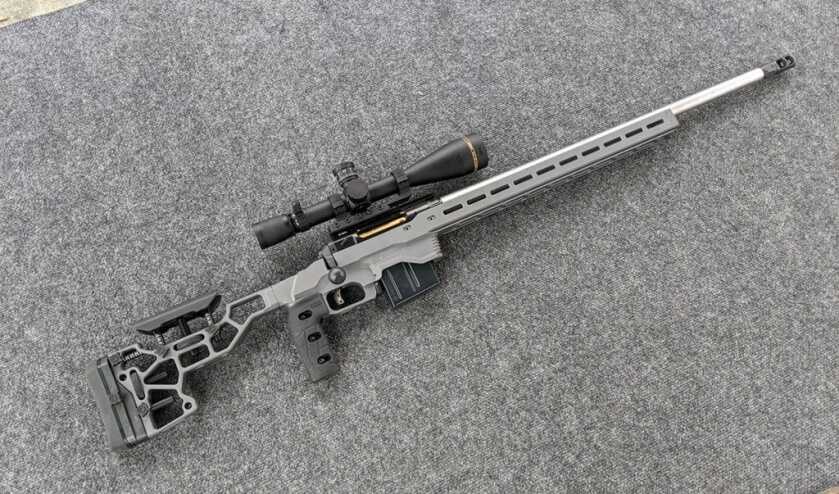
I know what you’re thinking. The long-range game has exploded in the last ten years, and every rifle company—big and small—is jumping on the bandwagon. Why should you give the Savage 110 Elite Precision a second look?
I posed this question to Savage Senior Brand Manager Jessica Treglia, and she responded with a laundry list of features that set the Elite Precision apart from other bolt-action rifles in this category. You can judge for yourself whether Savage hits the mark, but I like where they’re coming from.
Treglia told me they created the Elite Precision to cater to the guys (and gals) who want to get into competitions like the Precision Rifle League but don’t want to worry about modifying their rifles.
“When we designed the 110 Elite Precision, we wanted to offer customers a complete package,” Treglia said. “We didn’t want customers to have to purchase a firearm then acquire aftermarket accessories plus have a gunsmith make minor modifications in order to get optimal performance. Long-range precision shooting, and PRS, shouldn’t have to be a challenge to get into. We want to make it easy for our customers to try new disciplines and be able to purchase a firearm that’s ready to go.”
Anything that gets more people into the shooting sports is fine by me, and it looks like Savage has put their money where their mouth is. The Elite Precision an out-of-the-box option for new and experienced shooters alike, and I’ve been impressed with its performance so far.
Specifications
I used a rifle chambered in 6.5 Creedmoor for this review, but Savage also offers the Elite Precision chambered in 223 Rem, 300 PRC, 300 Win Mag, 308 Win, 338 Lapua, and 6mm Creedmoor. Barrel, length, mag capacity, and twist rate will change based on chambering.
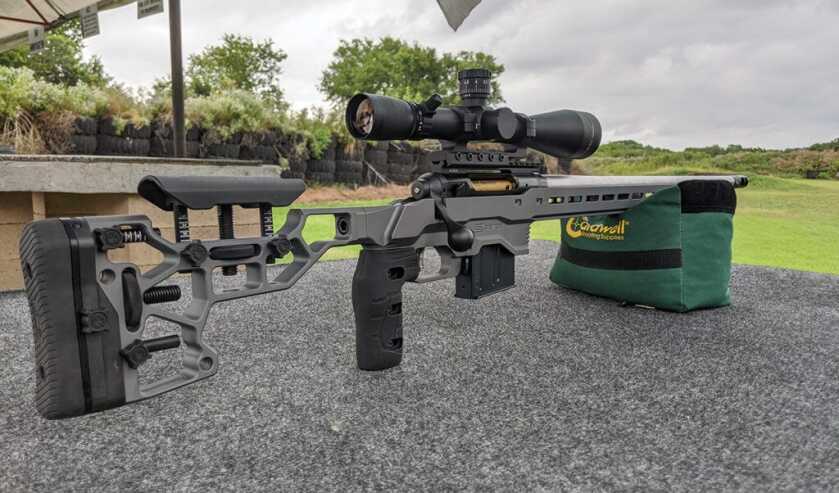
MSRP: $1,999.00
Action: Bolt
Barrel Color: Natural
Barrel Finish: Matte
Barrel Length (in)/(cm): 26 / 66.0
Barrel Material: Stainless Steel
Caliber: 6.5 CREEDMOOR
Magazine Capacity: 10
Hand: Right
Length of Pull (in)/(cm): 14-15.5 / 35.6
Magazine: Detachable Box Magazine
Overall Length (in)/(cm): 43-44 / 109.2
Rate of Twist (in): 1 in 8
Receiver Color: Black
Receiver Finish: Matte
Receiver Material: Stainless Steel
Type: Centerfire
Stock Color: Grey
Stock Finish: CeraKote
Stock Material: Aluminum
Stock Type: Chassis
Weight (lb)/(kg): 12.6 / 5.44
Precision Manufacturing
Along with a bevy of great features (more on that below), Savage integrated small but crucial enhancements in their manufacturing and design process.
The design started with first-hand knowledge from competitors in the Precision Rifle Series. Treglia told me that a handful of Savage engineers competed in PRS matches, and they surveyed other competitors to learn the optimal features in a PRS-style rifle.
A good stock is among the most important of those features, and Savage engineers worked with Modal Driven Technologies (MDT) to perfect the Savage 110 inletting process for the MDT Adjustable Core Competition (ACC) Chassis.
“We wanted to strategically partner with a proven manufacturer of accurate chassis systems where a consumer would have the ability to customize and utilize MDT’s weights,” Treglia said. “Instead of designing our own proprietary chassis, we decided to partner with the experts and put focus into our complete action.”
Their focus paid off. They found a way to manufacture a factory blueprinted action using the same techniques a custom gunsmith might use and keep the MSRP below $2,000. On each rifle, Savage techs square the locking lug recesses, receiver base, bolt face, locking lugs, recoil lug, and barrel lock nut. This process creates a perfect alignment between the action and the rifle’s bore. Techs also custom grind these parts to tighter tolerances. The result is a match-grade set of components, perfectly squared to the line of the bore for increased accuracy.
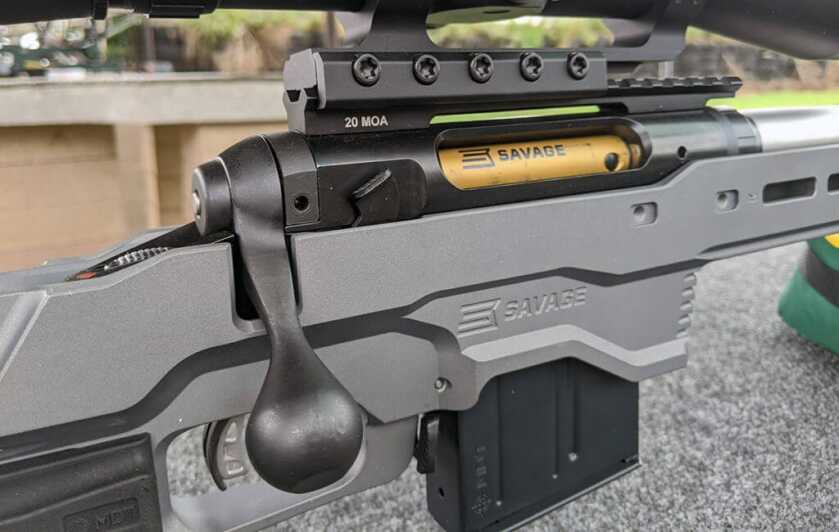
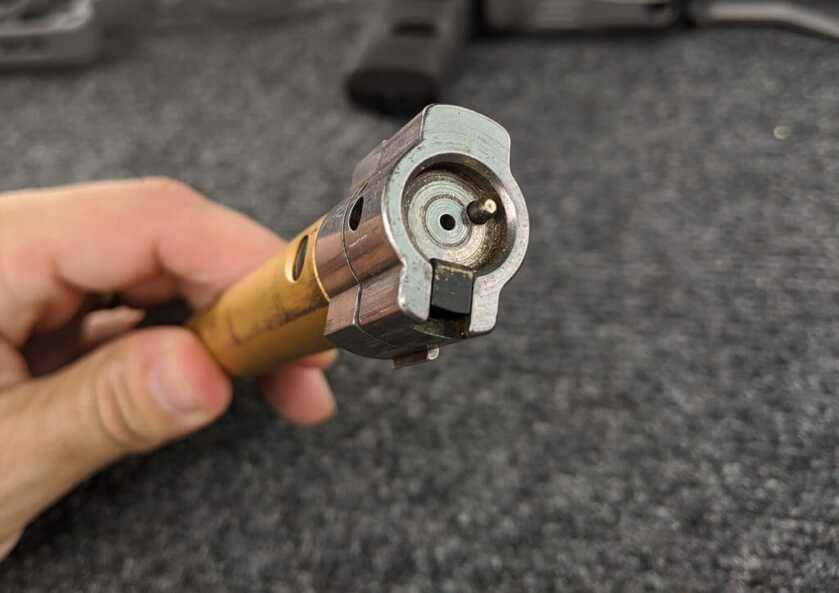
Stock and action are important, but everyone knows the barrel is where the magic happens. Savage designed their own contour specifically for long-range disciplines and called it the Modified Palma contour. It uses a button rifling method to create consistent bore diameters and rates of twist. That uniformity means better accuracy and decreases the chances that the point of impact will shift when the barrel heats up. Each barrel is also hand-straightened and inspected before being married to the receiver, and engineers use a minimum headspace gauge to create the perfect headspacing.
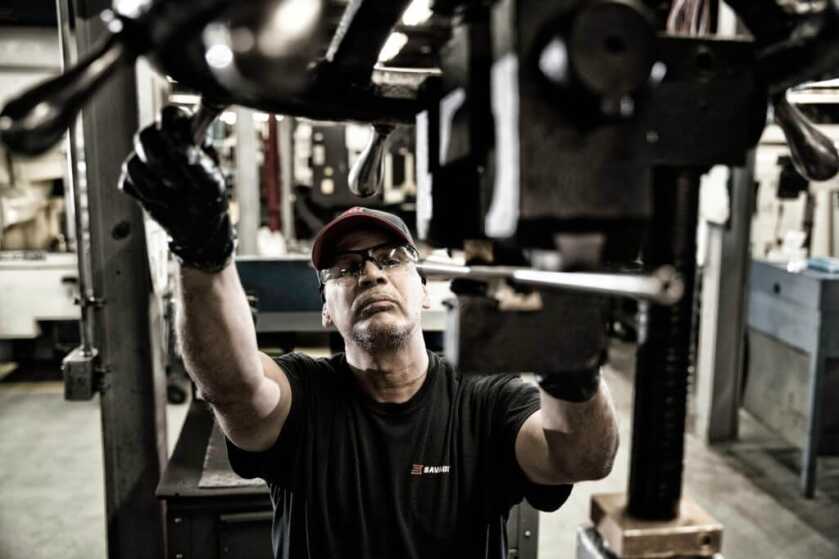
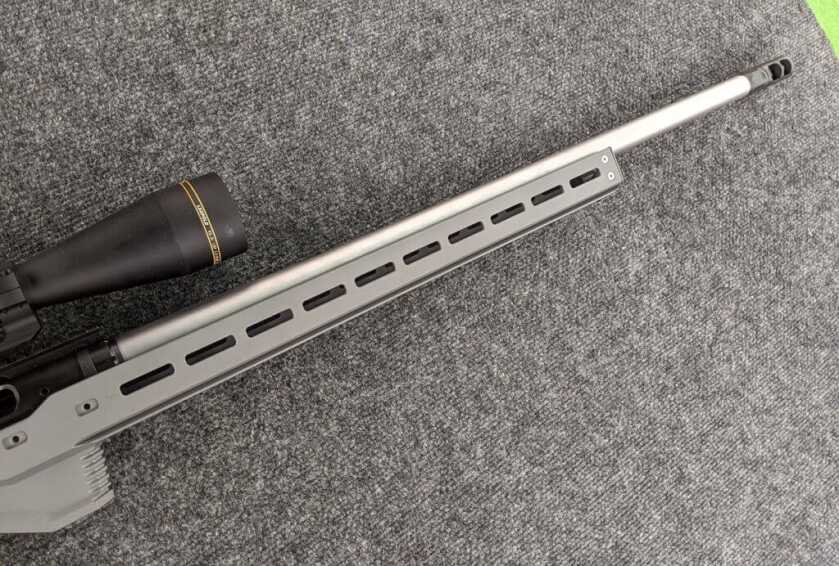
Precision Features
The list of features is endless, and you can check out the product page for yourself. But I wanted to elaborate on a few of the features that aren’t included or aren’t fully explained on the website.
First, I asked Treglia what benefits are provided by the coatings and materials on the receiver and bolt body. The 416 stainless steel of the receiver provides superior heat erosion and rust resistance to eliminate corrosion when exposed to more harsh environments, and the nitride finish adds surface hardness and lubricity.
The TiN coating on the bolt body also provides wear resistance, adds surface hardness, and reduces friction. When paired with the nitride receiver, this creates a smooth operation of the bolt, which I can confirm to be true.
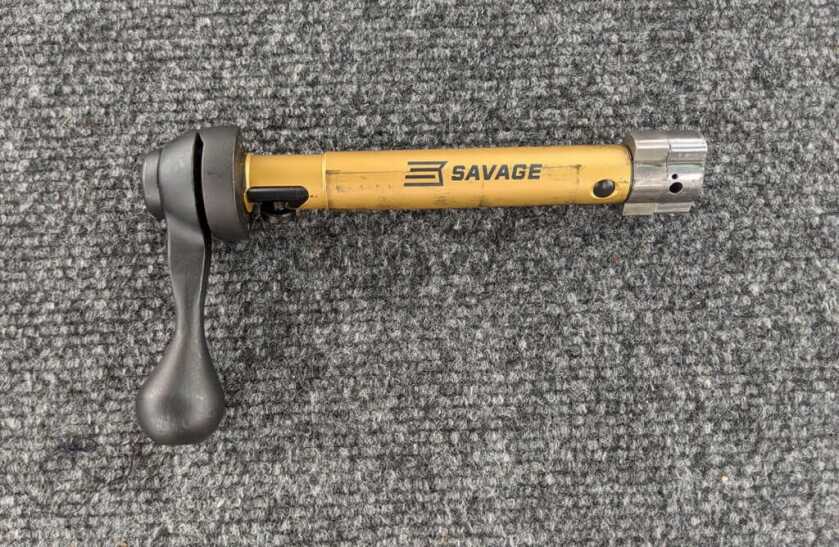
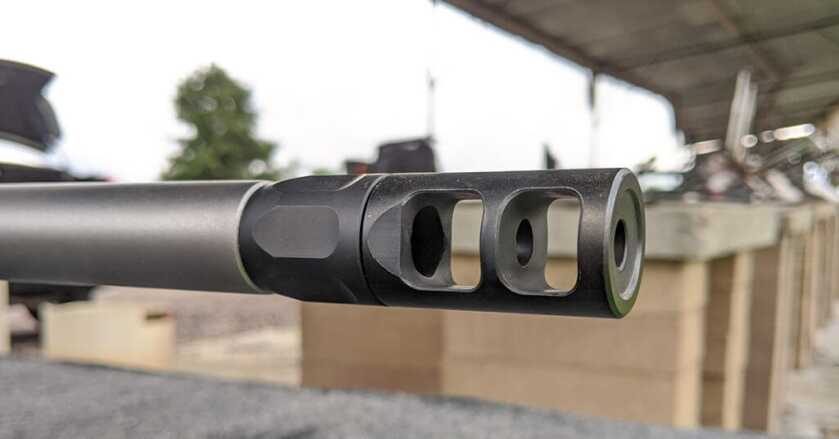
The bolt also uses a floating head, which squares the bolt to the action for 100% engagement of the lugs and rear face of the cartridge with a minute amount of float.
If you’re confused about the “self-timing taper aligned muzzle brake,” join the club. I asked Treglia about this, and she explained that this muzzle brake utilizes a taper integral to the barrel that mates with a taper on the inside of the brake. This ensures a tight alignment of the muzzle device and gives users the best performance and accuracy. While a loose muzzle device isn’t the end of the world in some conditions, it’s not optimal, especially during a competition.
The most obvious of the rifle’s features is the modular chassis system from MDT. You can check out our full review of the ACC chassis here, but its greatest benefit is its ability to be modified to suit the shooter’s preferences. It features a full Arca rail the entire length of the forend and M-LOK mounting points for accessories as well as additional forend weights – both internal and external. This allows users to add an additional nine pounds of steel to customize the balance and mass of the rifle to maximize performance and minimize recoil.

The chassis system also includes a fully adjustable stock that allows the cant, length of pull, and comb height to be customized. The roller wheels can be locked down via thumbwheels, and I never experienced any wiggle or movement. The adjustments are marked for repeatable settings.
Combined with the excellent trigger, an AR-compatible vertical grip, flared magazine well, and AICS mag system (along with a host of additional features), the 110 Elite Precision comes with everything you need to dominate your next match.
How Does it Shoot?
Of course, none of these features matter if the rifle can’t shoot, but hoo boy—can this rifle shoot.
I was disappointed not to get the chance to take the Elite Precision for a spin at a PRS or NRL match. But MDT is a staple in the long-range world, and I have no doubt it’ll hold up and perform well for the course of a match. (You can also check out True Pearce’s review of the ACC chassis to see why the system is ideal for PRS-style competition.) Fortunately, baseline accuracy is simple to test at a 100-yard range, and I was able to stretch the rifle’s legs out to 650 yards.
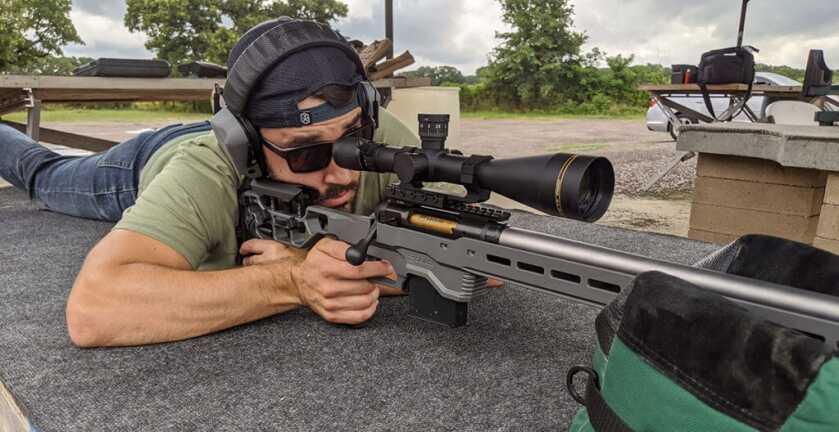
The Elite Precision is about as shootable as it gets. The 12.6-pound rifle produces very little recoil with the 6.5 Creedmoor cartridge, and as I mentioned above, the ACC chassis can be weighted to control recoil even further.
The trigger can be adjusted between 1.5-4 pounds, and mine shipped from the factory at 2.5 pounds. The adjustable stock allowed me to tailor the comb height and length of pull to my body as well as my shooting position. The vertical grip also added to comfort by making it easy to keep my right thumb on the right side of the gun.
Most precision rifle shooters roll their own cartridges, but you may not need to. Hornady sent four different loads to use for this test, and the results were, in a word, darn good.
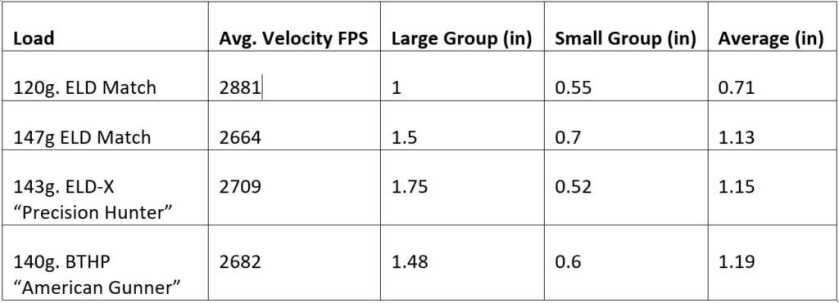
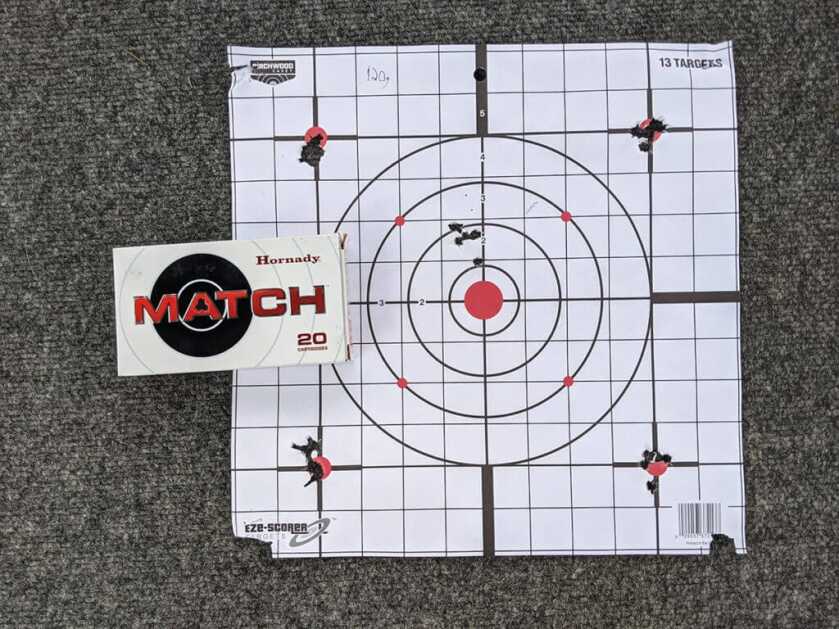
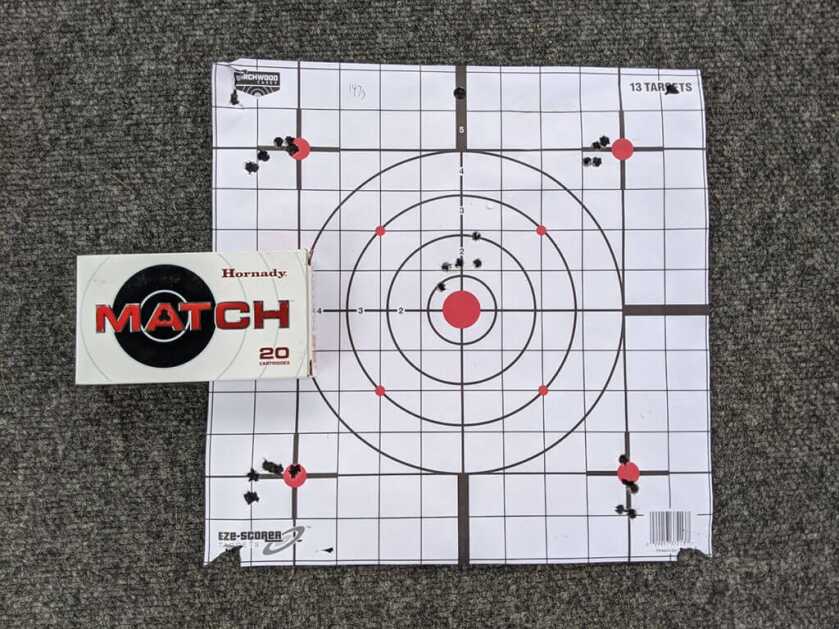

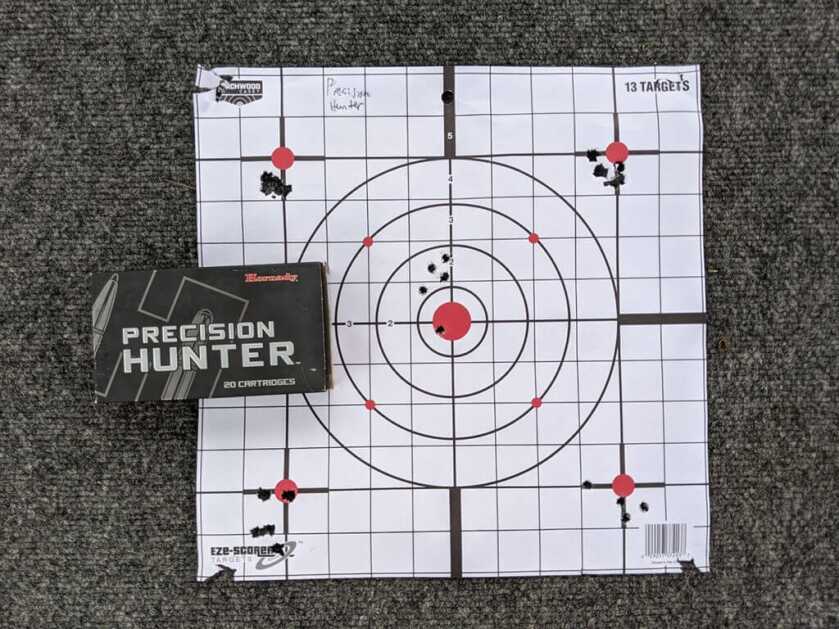
These results require a little interpretation. All the smallest groups you see in the images above were shot either fourth or fifth in the five-group string. Not all rifles see a noticeable improvement in accuracy after an initial break-in period, this rifle did.
That one-inch group in the middle of the 120g target, for example, was the first group I shot, and it threw off the average – if we don’t count the flyer in that group, the average group size drops to just 0.62 inches. That’s nearly a ½ MOA for five groups in a row out of a factory rifle with factory ammunition. I don’t know about you, but I’ve never shot a more accurate rifle from one of the major manufacturers using factory ammunition.
All other loads shot at least one group under one inch, and, again, I think additional shooting could shrink the averages significantly. Even out of the box, I would have liked to see better accuracy from the bullets above 120 grains. But the 143g showed promise, and I have no doubt a hand loader could work up an excellent 140g or 147g recipe.

After accuracy testing at 100 yards, I used the 120g loads to take the rifle out a little further. My local range offers man-sized steel targets at 650 yards, which I realize is a little shorter than some PRS match stages. Still, beyond about 500 yards you’re testing the repeatability of your cartridges as much as the rifle, and the 100-yard test proved the Elite Precision can be a consistent shooter. Paired with a cartridge with a low standard deviation of velocity, this rifle can compete in any base-class PRS match.
Paired with a Leupold VX-3i LRP 6.5-20×50, ringing a man-sized target at 650-yards is child’s play. I had some fun with steel for a while, then shot a 10-shot group at 650 yards and a 10-shot group at 330 yards. These groups measured six and three inches, respectively, which maintained the rifle’s sub-MOA performance.
Final Shots
If you’re in the market for a rifle to compete in a long-range competition, the Savage 110 Elite Precision is an excellent choice.
“This firearm is specifically designed for PRS and NRL disciplines, but the magnum calibers are performing well in ELR disciplines as well,” Treglia told me. “It was built to perform in the competition world and given the accuracy, can be used in many disciplines.”

Precision manufacturing and quality components put together by a historic company dedicated to developing a competition-specific rifle? Sounds good to me.

Their off the shelf stuff shoots better than that however the tester made a fatal error he used one of those junk sleds to fire it instead of at the very least decent bags or a real front rest with a rear bag and I am not talking about caldwell junk.
The tiny space between parts that allows them to move (or not) are clearances, not tolerances.
Tin is an element, TiN (titanium nitride) is a metal coating.
Get your editors editing!
That’s fairly shitty accuracy for a $2k rifle…just say’n…
Could be the shooter. My experience with Savage rifles, even in lesser trim, has been that the accuracy is excellent. Of course, I do reset the headspace on all Savage rifles that come my way.
6.5 cal Looks likes very awesome fun. Love wish I had one ??????!
do you have a video I can watch.